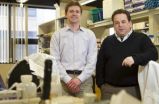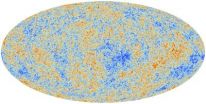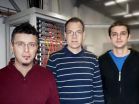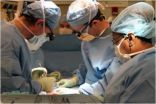(Press-News.org) PROVIDENCE, R.I. [Brown University] — A new study finds that two genes individually associated with rare autism-related disorders are also jointly linked to more general forms of autism. The finding suggests a new genetic pathway to investigate in general autism research.
The genes encode the proteins NHE6 and NHE9, which are responsible for biochemical exchanges in the endosomes of cells. Mutations in the NHE6 gene are a direct cause of Christianson Syndrome, while mutations in the NHE9 gene lead to a severe form of autism with epilepsy. In the new study, a statistical analysis published online this week in the journal Molecular Psychiatry, Brown University researchers and their colleagues found a specific pattern of misregulation of those two genes — NHE9 is up-regulated and NHE6 is down-regulated — in the brains of children with autism compared to the brains of non-autistic children.
"These genes play a role, not just in the rare forms of autism but also in the generalized pathology of autism," said Dr. Eric Morrow, professor of biology and professor of psychiatry and human behavior at Brown University, the paper's senior author. "In autism I think people get overwhelmed because there are hundreds of different genes. One of the important things is to find points of convergence where there are events that might be common across different forms."
The new study suggests that misregulation of NHE6 and NHE9 is one such event.
The research is based on a statistical analysis of messenger RNA samples from a bank of brain tissue donated posthumously by some children who had autism and some who did not. Messenger RNA is a key molecular player in the process of gene expression, making it an indicator of how gene expression was regulated in the cerebral cortex of each of the children.
Guided by Morrow, who studies autism genomics and sees autism patients at the E.P. Bradley Hospital in East Providence, lead author Matthew Schewede spent the summer of 2012 poring over the raw data, which was made available from a 2011 study led by co-author Daniel Geschwind and Irinia Voineagu of the University of California–Los Angeles.
Schwede, who studied statistics as an undergraduate at Harvard, is now a second-year student in the Warren Alpert Medical School. His classes are a block away from Morrow's lab, making the collaboration easy.
"We kind of stumbled on this," Schwede said. "At first we were just identifying what was up- and down-regulated in autism cerebral cortex in this data set."
But Schwede's findings about the NHE genes caught Morrow's attention in particular, because Morrow has been studying the NHE6 and NHE9 genes and the rare autism forms they cause.
"When we realized that some genes of interest for our lab were altered in the cerebral cortex, we focused the analysis on these genes in particular and how they were related to other processes," Schwede said.
Schwede made a second key finding: a strong and significant correlation between the misregulation of the NHE genes and the down-regulation of synapse genes, which is known to occur in autism.
Schwede's purely statistical analysis does not explain the physiology of how up-regulation of NHE9 and down-regulation NHE6 would affect synapse formation or general autism, but Morrow's biology group has a clear next step: to observe the neural and behavioral effects in the lab of misregulation of those genes in various experimental systems.
"That's a hypothesis that we can take to the mouse," Morrow said. "When we knock out these genes, how do the synapses change?"
The statistical results point out the value of studying rare forms of autism, not only for the sake the patients who have those conditions, Morrow said, but also because doing so can inform research about other forms of autism.
"We argue that it's relevant but sometimes, in fairness, we wonder about that," Morrow said. "A study like this really conveys strongly that that's a fair argument."
INFORMATION:
In addition Schwede, Morrow, and Geschwind, other authors are Krassimira Garbett and Karoly Mirnics of Vanderbilt University.
This grant was funded by the National Institute of Mental Health, the Simons Foundation for Autism Research Initiative, and the Nancy Lurie Marks Family Foundation. Schwede was funded by a summer research assistantship from the Alpert Medical School.
Misregulated genes may have big autism role
2013-03-21
ELSE PRESS RELEASES FROM THIS DATE:
Planck's 'child' universe
2013-03-21
"We are very excited, we are finally seeing the concrete results of so many years of hard work". This is how the scientists of the Planck project have commented the first data resulting from the observations carried out by Planck. The mission of the ESA satellite is to observe the past of our Universe, going back in time and reaching the very first instant right after the Big Bang. The image that the Planck scientists convey today is that of a 'child' Universe, dating back to about 380,000 years after the Big Bang, when its temperature was similar to that of the most external ...
Genetic analysis calls for the protection of 2 highly endangered Portuguese fish species
2013-03-21
The two endangered fish species, Squalius aradensis and S. torgalensis, most generally belong to the Cyprinidae, or the carp family. This is the largest fish, and vertebrate family, formed of freshwater fish with a diversity of more than 2,400 species. The family also has an important economic value as a food source. More specifically, the two species studied are members of the subfamily Leuciscinae, formed of small freshwater fish commonly known as minnows. A new genetic study of the two endangered fish was recently published in the open access journal Comparative Cytogenetics.
S. ...
Genetics, age and ethnicity are risk factors in PCa, say experts
2013-03-21
"Are there genetic risk factors for PCa? Yes, and BRCA2 and HOXB13 are useful for predicting high-risk disease," said Jack Cuzick (GB) president of the International Society for Cancer Prevention (ISCaP), referring to the two genes implicated in high-risk prostate disease. Cuzick gave a report on the Consensus Statement for Prostate Cancer Prevention at the closing plenary session of the 28 Annual EAU Congress held in Milan, Italy from March 15 to 19.
"The goal should be to integrate with other protein markers in order to develop risk-adapted screening algorithms," he ...
Novel insights into the evolution of protein networks
2013-03-21
This press release is available in German.
System-wide networks of proteins are indispensable for organisms. Function and evolution of these networks are among the most fascinating research questions in biology. Bioinformatician Thomas Rattei, University of Vienna, and physicist Hernan Makse, City University New York (CUNY), have reconstructed ancestral protein networks. The results are of high interest not only for evolutionary research but also for the interpretation of genome sequence data. Recently, the researchers published their paper in the renowned journal PLOS ...
Planck challenges our understanding of the Universe
2013-03-21
Planck refines our knowledge of the Universe's composition and evolution
New maps provide excellent evidence for our standard model of cosmology
Planck dates Universe at 13.82 billion years old
Anomalies suggest that Universe may be different on scales larger than those we can directly observe
Most accurate values yet for the ingredients of the Universe, with normal matter contributing just 4.9% of the mass/energy density of the Universe and dark matter making up 26.8% - nearly a fifth more than the previous estimate.
Europe's Planck satellite - a flagship mission ...
What you eat before surgery may affect your recovery
2013-03-21
BOSTON, MA—According to a new study, the last few meals before surgery might make a difference in recovery after surgery. Fat tissue is one of the most dominant components that make up the body, and fat tissue is always traumatized during major surgery.
Researchers at Brigham and Women's Hospital (BWH) found that this direct trauma greatly impacts the chemical balance of fat tissue—chemicals that are known to communicate with nearby and distant organs. In the study, mice that consumed a typical Western, high-fat diet showed an exaggerated imbalanced response. Importantly, ...
Researchers tackle physician challenge of correctly ordering laboratory tests
2013-03-21
(Boston) – A new study involving researchers from the Boston University School of Medicine (BUSM) has identified barriers that clinicians face in correctly ordering appropriate laboratory tests and highlights some solutions that may simplify this process and improve patient outcomes. The study, published in the March 2013 issue of the Journal of General Internal Medicine, was led by Elissa Passiment, EdM, of the American Society for Clinical Laboratory Science and James L. Meisel, MD, associate professor of medicine at BUSM.
Passiment, Meisel and colleagues identified ...
Global nitrogen availability consistent for past 500 years, linked to carbon levels
2013-03-21
MANHATTAN -- A Kansas State University research team has found that despite humans increasing nitrogen production through industrialization, nitrogen availability in many ecosystems has remained steady for the past 500 years. Their work appears in the journal Nature.
"People have been really interested in nitrogen in current times because it's a major pollutant," said Kendra McLauchlan, assistant professor of geography and director of the university's Paleoenvironmental Laboratory. "Humans are producing a lot more nitrogen than in the past for use as crop fertilizer, ...
'Gene Therapy for Human Disease: Clinical Advances and Challenges'
2013-03-21
Philadelphia, PA, March 21, 2013 – The April issue of Translational Research examines the progress and outlook of gene therapy research, with a specific focus on the clinical applicability of gene therapy today. Research articles included in the special issue highlight current studies that, after decades of trial and error, may provide evidence for a clear path of treatment and cure for many diseases. There are more than 1,800 genetic disorders known in humans, and only a small fraction of these can be treated and even fewer cured. Some of these disorders are exceedingly ...
'Sideline quasars' helped to stifle early galaxy formation, says CU-Boulder study
2013-03-21
University of Colorado Boulder astronomers targeting one of the brightest quasars glowing in the universe some 11 billion years ago say "sideline quasars" likely teamed up with it to heat abundant helium gas billions of years ago, preventing small galaxy formation.
CU-Boulder Professor Michael Shull and Research Associate David Syphers used the Hubble Space Telescope to look at the quasar -- the brilliant core of an active galaxy that acted as a "lighthouse" for the observations -- to better understand the conditions of the early universe. The scientists studied gaseous ...





